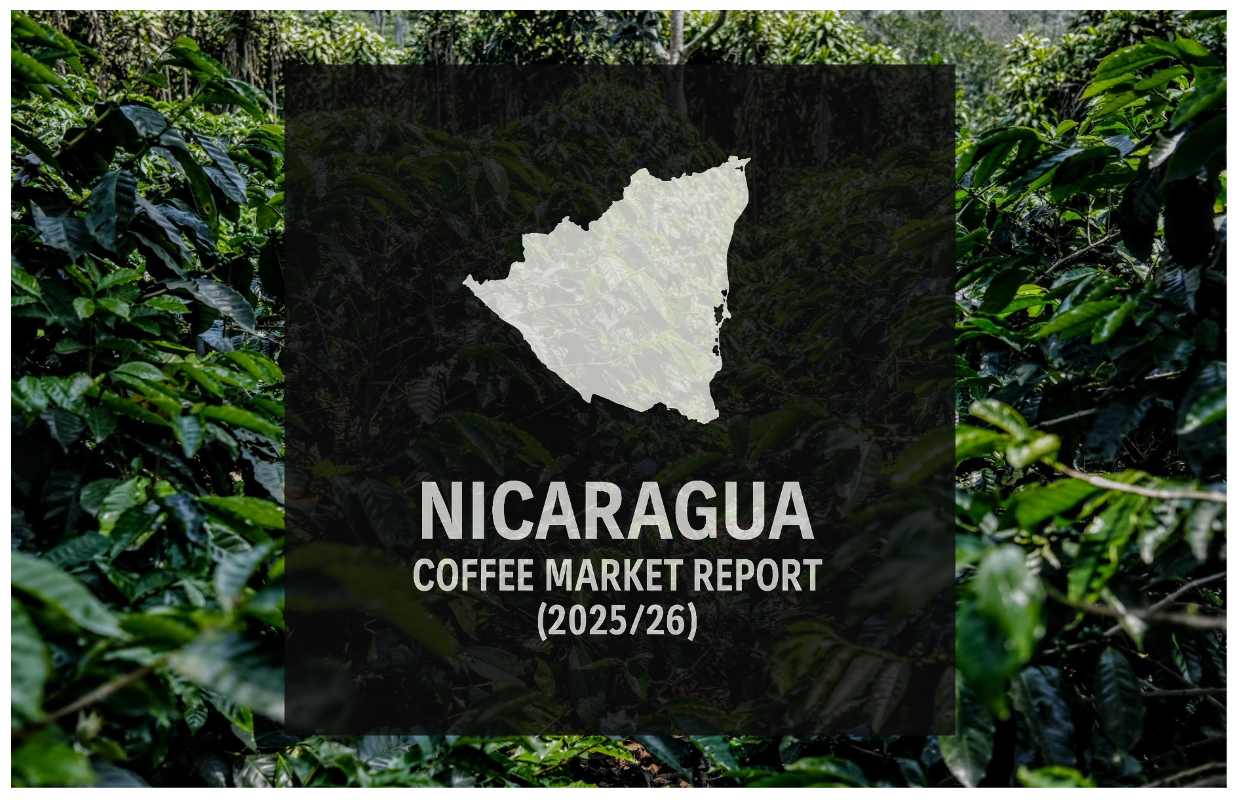Nicaragua’s coffee production is forecast to hold steady at the equivalent of approximately 2.58 million 60-kilogram bags in the 2025/26 market year, consistent with recent historical trends, according to the latest USDA estimates.
Rising international prices have encouraged farmers to increase fertilizer use and improve field maintenance, while forecasts for well-distributed rains are boosting expectations for a solid harvest, despite numerous issues facing smallholder farmers.
Total exports are projected at 2.42 million bags, up slightly from 2.41 million in 2024/25. The United States remains the top destination, receiving approximately half of Nicaragua’s coffee exports, followed by the European Union. However, ongoing labor shortages and logistics bottlenecks in Central American ports are expected to hinder exports.
Average yields are expected to hold at 18 bags per hectare. Arabica continues to account for more than 95% of total production, with robusta cultivation stable at approximately 7,000 hectares.
These and other predictions are outlined in the latest USDA Foreign Agricultural Service annual report on the Nicaragua coffee sector.
[Note: This is part of a series of DCN stories that will explore USDA FAS annual coffee reports. The information agency typically delivers more than a dozen country-level reports on the coffee sector, each coming from different authors and field offices.]
📉 Export Outlook
-
Exports are forecast at 2.42 million 60-kilogram bags in 2025/26, in line with recent yearly averages.
-
Exports recovered in 2024/25 following a 15% drop in 2023/24 caused by El Niño-related disruptions.
-
Top export destinations in 2023/24 (bags):
-
United States: 850,266
-
Belgium: 427,268
-
Germany: 116,693
-
Costa Rica, Italy, Canada, Sweden and Mexico followed
-
-
European buyers show particular interest in organic and Fairtrade-certified coffees, while U.S. roasters continue sourcing high-quality arabica beans.
-
Supply chain challenges remain, including port congestion, delayed shipping and limited access to working capital for exporters.
🌱 Production and Growing Conditions
-
Total production in 2025/26 is forecast at 2.58 million bags, including 2.42 million arabica and 160,000 robusta.
-
Average international prices exceeded $280 per bag at the start of 2025, encouraging higher fertilizer usage as farmers sought to increase yields.
-
Arabica is grown across 136,000 hectares, mostly in Jinotega, Matagalpa and Nueva Segovia. Robusta is cultivated in the Southern Caribbean Coast, mainly through a mill called Nueva Guinea.
-
Harvesting labor remains a major challenge, as outward migration has reduced the rural workforce. Wage rates doubled in some areas during the 2024/25 harvest.
-
Planting area remains stable at 143,000 hectares, with 141,000 harvested. About 14% has been replanted since the 2013–14 rust crisis.
☕ Domestic Consumption
-
Domestic consumption remains flat at 160,000 bags, with per capita consumption at 1.5 kilograms.
-
Urban café culture is growing, especially among younger consumers, supporting demand for roasted specialty coffee.
-
Despite this trend, rising food costs and high unemployment are expected to suppress broader consumption gains in 2025/26.
🏷️ Yields, Imports and Stocks
-
Average arabica yield is forecast at 18 bags per hectare, consistent with historic levels.
-
Access to high-yielding cultivars such as Marsellesa, Parainema, IH Cafe 90 and others has improved, supported by USDA and partners in the MOCCA coffee sector development program.
-
Imports are negligible, with no reported green, roasted or soluble imports in recent years.
-
Ending stocks are forecast at 130,000 bags, up from 25,000 just two years ago, primarily due to delays in export logistics.
🏛️ Policy and Sector Support
-
Law 853, passed in 2013, funds sector renovation via a $4 per exported bag levy. More than $40 million has been collected, but farmers have expressed mixed views on its impact.
-
Law 368, a.k.a. the “Coffee Law,” which originally provided tax exemptions, was revised in 2019 to impose import duties of up to 30% on key agricultural inputs, reducing growers’ purchasing power, according to the analysis.
-
Long-term credit remains largely inaccessible, constraining renovation and adoption of improved production practices.
-
The MOCCA project (2019–2025), supported by USDA and WCR, improved seed quality, certified nurseries and distributed training to growers across the country, according to the USDA.
For detailed statistics and trade data, see the full USDA Coffee Annual Report for Nicaragua (May 2025).
Comments? Questions? News to share? Contact DCN’s editors here. For all the latest coffee industry news, subscribe to the DCN newsletter.







Comment